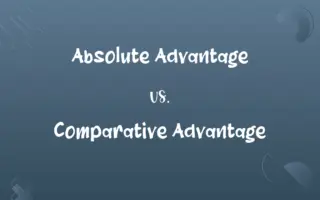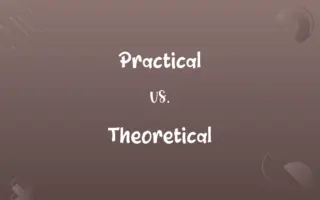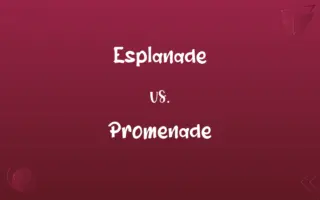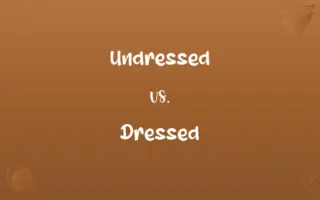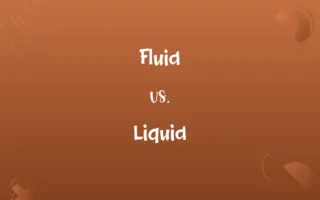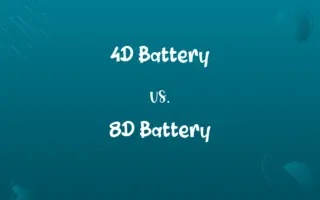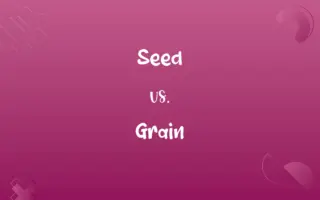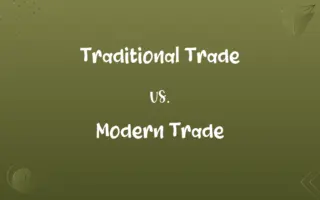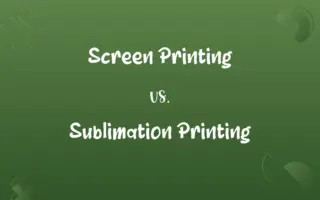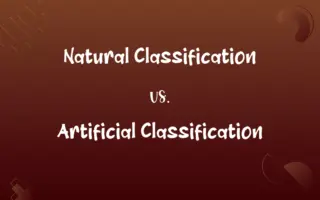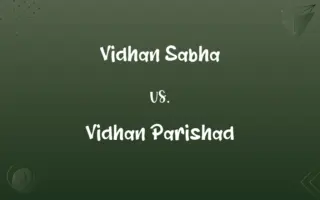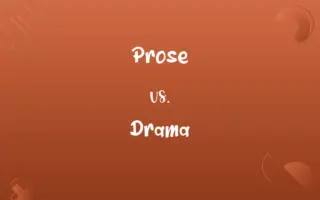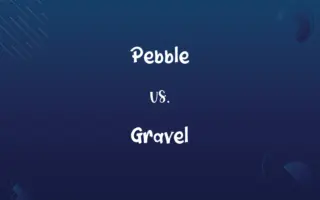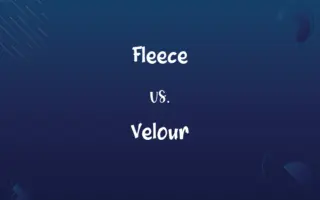Classical Conditioning vs. Operant Conditioning: Know the Difference

By Shumaila Saeed || Published on January 17, 2024
Classical Conditioning is learning through association between two stimuli, while Operant Conditioning involves learning through consequences of behavior.

Key Differences
Classical Conditioning involves learning by association, where a neutral stimulus becomes associated with a meaningful stimulus and acquires the capacity to elicit a similar response. For example, Pavlov's dogs learned to salivate at the sound of a bell, a neutral stimulus, when it was repeatedly paired with food, a meaningful stimulus. In contrast, Operant Conditioning is based on the premise that behavior is influenced by its consequences. Reinforcement and punishment are used to increase or decrease the likelihood of a behavior. For instance, a child may learn to complete homework to receive praise (reinforcement) or avoid detention (punishment).
Shumaila Saeed
Jan 17, 2024
In Classical Conditioning, the subject learns to form an automatic response to a stimulus. It's a passive learning process where the response is typically involuntary. An example is a person who flinches at the sound of a loud noise because they have learned to associate it with something unpleasant. However, Operant Conditioning is an active learning process where the subject learns to operate on their environment to produce desired outcomes. This form of conditioning relies on voluntary behaviors, like a student studying hard for an exam to achieve good grades.
Shumaila Saeed
Jan 17, 2024
A key component of Classical Conditioning is the pairing of stimuli. It starts with an unconditioned stimulus that elicits an unconditioned response naturally. Through conditioning, a previously neutral stimulus becomes a conditioned stimulus that triggers a conditioned response. For example, the smell of food (unconditioned stimulus) naturally elicits salivation (unconditioned response), but when paired with a bell sound (neutral stimulus), the bell alone can trigger salivation (conditioned response). On the other hand, Operant Conditioning involves reinforcement or punishment following a behavior. Positive reinforcement adds a rewarding stimulus, and negative reinforcement removes an unpleasant stimulus, both increasing the behavior. Punishment, however, decreases the likelihood of the behavior reoccurring.
Shumaila Saeed
Jan 17, 2024
The origins of Classical Conditioning are traced back to Ivan Pavlov, a Russian physiologist, who conducted experiments with dogs. His work laid the foundation for understanding how organisms learn through association. In contrast, Operant Conditioning was developed by B.F. Skinner, an American psychologist. Skinner's work focused on understanding how the consequences of actions influence voluntary behaviors and the principles of reinforcement and punishment.
Shumaila Saeed
Jan 17, 2024
Classical Conditioning is often used to explain emotional and physiological responses, such as phobias or taste aversions, which are automatic and not under conscious control. This learning process plays a significant role in the development of certain behaviors without the individual actively trying to learn them. In contrast, Operant Conditioning is widely used in behavior modification programs, such as training animals, classroom management, and therapy, emphasizing the role of reward and punishment in shaping voluntary behaviors.
Shumaila Saeed
Jan 17, 2024
ADVERTISEMENT
Comparison Chart
Nature of Behavior
Involuntary, automatic responses
Voluntary, active behaviors
Shumaila Saeed
Jan 17, 2024
Key Components
Pairing of neutral and unconditioned stimuli
Reinforcement and punishment following behavior
Shumaila Saeed
Jan 17, 2024
Practical Application
Used to explain automatic responses, like phobias
Used in behavior modification, such as training and therapy
Shumaila Saeed
Jan 17, 2024
ADVERTISEMENT
Classical Conditioning and Operant Conditioning Definitions
Classical Conditioning
Involuntary response learning through stimulus association.
Pavlov's dogs learning to salivate at the sound of a bell is classical conditioning.
Shumaila Saeed
Jan 05, 2024
Operant Conditioning
A method of learning that employs rewards and punishments for behavior.
Students who complete their homework are allowed extra recess time, an application of operant conditioning.
Shumaila Saeed
Jan 05, 2024
Classical Conditioning
A process where a conditioned stimulus starts to elicit a conditioned response.
In classical conditioning, a light paired with a shock can make a rat flinch at the light alone.
Shumaila Saeed
Jan 05, 2024
Operant Conditioning
Behavioral training through the manipulation of consequences.
A cat stops scratching the couch after being sprayed with water, a case of operant conditioning.
Shumaila Saeed
Jan 05, 2024
Classical Conditioning
A method of learning where two stimuli are linked to produce a new learned response.
The smell of the ocean triggering memories of vacation is due to classical conditioning.
Shumaila Saeed
Jan 05, 2024
ADVERTISEMENT
Operant Conditioning
A learning process where behavior is controlled by consequences.
Tim cleans his room more often after his parents started rewarding him with extra video game time.
Shumaila Saeed
Jan 05, 2024
Classical Conditioning
Conditioning where a neutral stimulus acquires the ability to evoke a response.
Feeling hungry at the sound of a lunch bell is classical conditioning.
Shumaila Saeed
Jan 05, 2024
Operant Conditioning
A psychological principle of learning based on altering behavior through reinforcement and punishment.
A worker increases productivity after being promised a bonus, showing operant conditioning in action.
Shumaila Saeed
Jan 05, 2024
Classical Conditioning
Learning through associating a neutral stimulus with a naturally occurring stimulus.
A dog salivating at the sound of a bell is an example of classical conditioning.
Shumaila Saeed
Jan 05, 2024
Operant Conditioning
The use of reinforcement or punishment to increase or decrease a behavior.
A dog learns to sit on command to receive treats, demonstrating operant conditioning.
Shumaila Saeed
Jan 05, 2024
Repeatedly Asked Queries
What is operant conditioning?
Operant conditioning is a method of learning that employs rewards and punishments to influence behavior.
Shumaila Saeed
Jan 17, 2024
Can you give an example of classical conditioning?
An example is Pavlov's dogs, where dogs learned to associate the sound of a bell with food and started salivating at the bell alone.
Shumaila Saeed
Jan 17, 2024
Can you give an example of operant conditioning?
A classic example is a rat learning to press a lever to receive food, with the food acting as a reward.
Shumaila Saeed
Jan 17, 2024
What are the types of reinforcement?
There are two types: positive reinforcement (adding a pleasant stimulus) and negative reinforcement (removing an unpleasant stimulus).
Shumaila Saeed
Jan 17, 2024
What's an example of negative reinforcement?
Removing chores when a child achieves good grades is an example of negative reinforcement.
Shumaila Saeed
Jan 17, 2024
What is classical conditioning?
Classical conditioning is a learning process that occurs through associations between an environmental stimulus and a naturally occurring stimulus.
Shumaila Saeed
Jan 17, 2024
How does operant conditioning differ from classical conditioning?
Operant conditioning is about learning from the consequences of behavior, while classical conditioning involves learning through association.
Shumaila Saeed
Jan 17, 2024
What is reinforcement in operant conditioning?
Reinforcement in operant conditioning is a stimulus that increases the likelihood of a behavior being repeated.
Shumaila Saeed
Jan 17, 2024
What's an example of positive reinforcement?
Giving a child a treat for doing their homework is an example of positive reinforcement.
Shumaila Saeed
Jan 17, 2024
What are some examples of punishment in operant conditioning?
Examples include a time-out for bad behavior or a fine for breaking a rule.
Shumaila Saeed
Jan 17, 2024
What is punishment in operant conditioning?
Punishment is a stimulus that decreases the likelihood of a behavior being repeated.
Shumaila Saeed
Jan 17, 2024
Is negative reinforcement the same as punishment?
No, negative reinforcement increases a behavior by removing a negative stimulus, while punishment decreases a behavior.
Shumaila Saeed
Jan 17, 2024
Can operant conditioning be used in education?
Yes, it can be used to encourage good behaviors and discourage disruptive ones.
Shumaila Saeed
Jan 17, 2024
Can operant conditioning lead to addiction?
Yes, addictive behaviors can be reinforced through operant conditioning mechanisms.
Shumaila Saeed
Jan 17, 2024
How does classical conditioning work in everyday life?
It works through associations we make, like feeling hungry at the sight of a favorite restaurant.
Shumaila Saeed
Jan 17, 2024
Is operant conditioning effective in animal training?
Yes, it's widely used in animal training, such as teaching dogs commands using treats.
Shumaila Saeed
Jan 17, 2024
Can classical conditioning be unlearned?
Yes, through a process called extinction, where the conditioned response decreases when the conditioned stimulus is repeatedly presented without the unconditioned stimulus.
Shumaila Saeed
Jan 17, 2024
Can classical conditioning affect emotions?
Yes, it can create emotional responses to previously neutral stimuli.
Shumaila Saeed
Jan 17, 2024
How does classical conditioning differ from habituation?
Classical conditioning involves learning an association, while habituation is getting used to a stimulus over time.
Shumaila Saeed
Jan 17, 2024
How is operant conditioning used in therapy?
It's used in behavioral therapy to reinforce positive behaviors and reduce unwanted ones.
Shumaila Saeed
Jan 17, 2024
Share this page
Link for your blog / website
HTML
Link to share via messenger
About Author
Written by
Shumaila SaeedShumaila Saeed, an expert content creator with 6 years of experience, specializes in distilling complex topics into easily digestible comparisons, shining a light on the nuances that both inform and educate readers with clarity and accuracy.
